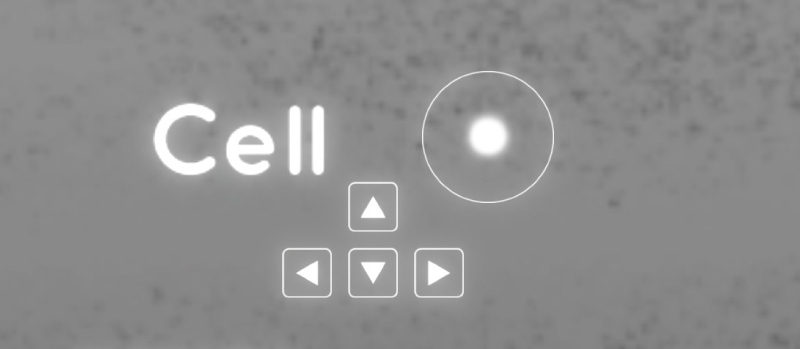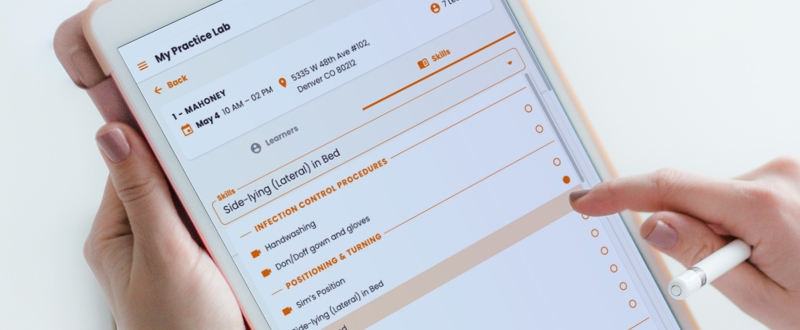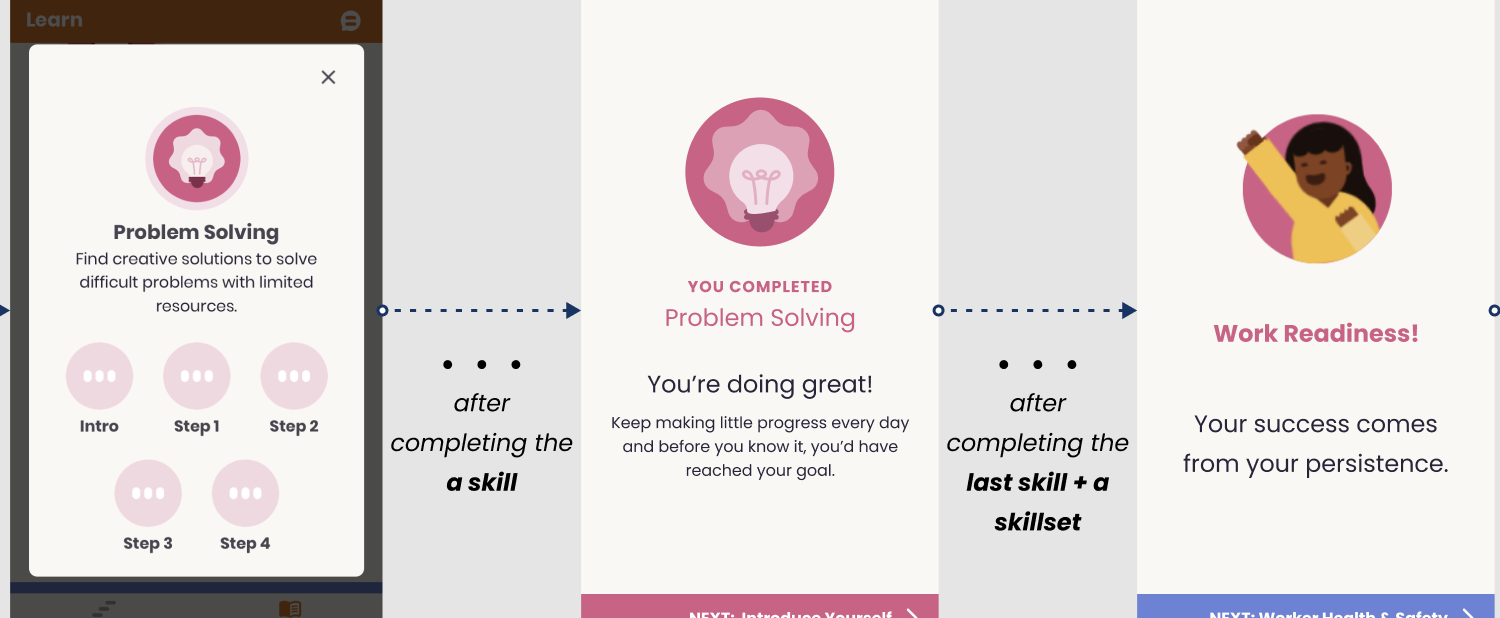TEAM
Darwin
RESPONSIBILITIES
• Design Research Experiments
• Conduct Preliminary Experiments
• Design Game Concept, Gameplay, and Mechanics
• Prototype Game [Unity3D, C#, Javascript]
• Design Game Play and Mechanics
OBJECTIVE
The main idea was to be able to allow players the capability to combine different cell-types and create different kinds of configurations. Depending on the configurations, players could exhibit different kinds of behaviors.
BACKGROUND
This is part of my thesis research to explore emergent systems inspired by Agent-Based Modeling. However, instead of simulations of artificial agents, I developed a prototype for human players. The player controls a cell and the main goal is to survive by eating food in the environments. This exploration is hugely inspired by Jenova Chen’s truly excellent game called Flow from thatgamecompany and a type of animal colony called Siphonophorae (whatever understanding I have I hugely owed to Dr. Casey Dunn in his excellent paper) as the exploration for the emergent behaviors in a complex system.
However, in order for players’ behaviors to be adaptive, in a sense that they change and evolve, the game has to be nonlinear. The Cell game is an open-ended game, in that the players play and explore based on their own pace and freedom. It is an open world to a very small extent. In order to allow adaptive behaviors, the Cell game proposed a few necessary conditions:
1. Dynamic environment. The environmental change could include scarcity of food resources, increase of competing predators, and so on.
2. Switching strategies. This comes in the form of cell configurations that are most efficient and appropriate for the players to choose in response to the dynamic environment.
3. Signaling. Players are able to detect various signals—is the critter in front of me a prey or predator?
There were limitations, for example, “mutation” in the cell during replication was too complicated to program. Randomization of the parameters is possible. However, the time limit of the gameplay made it difficult for players to select out the best cell variations for adaptation.
PROCESS OF EXPERIMENTATION
The process started by experimenting with paper models. Different color papers were assigned either as adjectives (soft, hard, etc) or verb (divide, propel, etc.). Two participants were involved to test-play the paper models. The idea was to try and see whether different configurations would create different “creatures”, namely, what sort of creatures would emerge from the combinations of various properties.
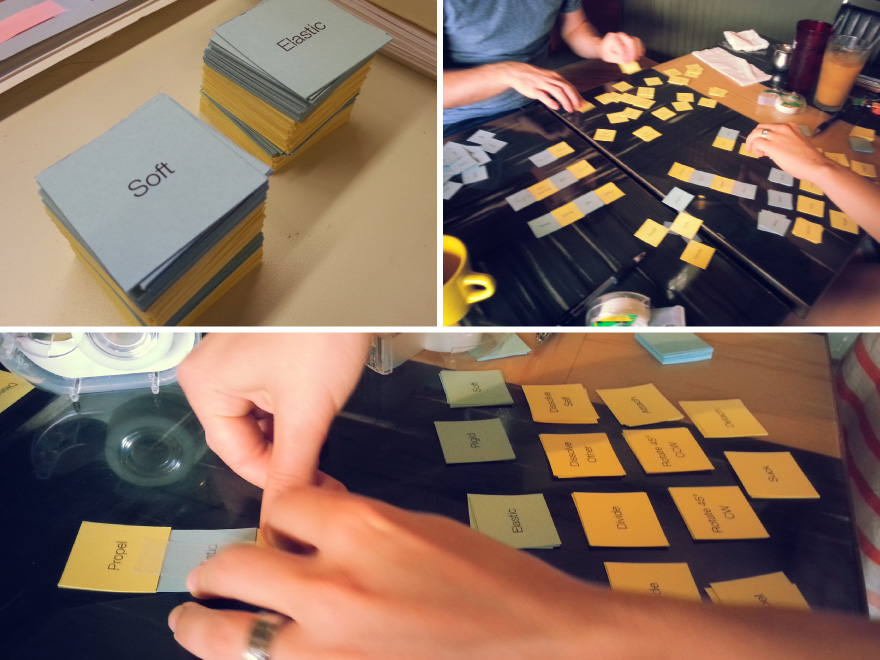
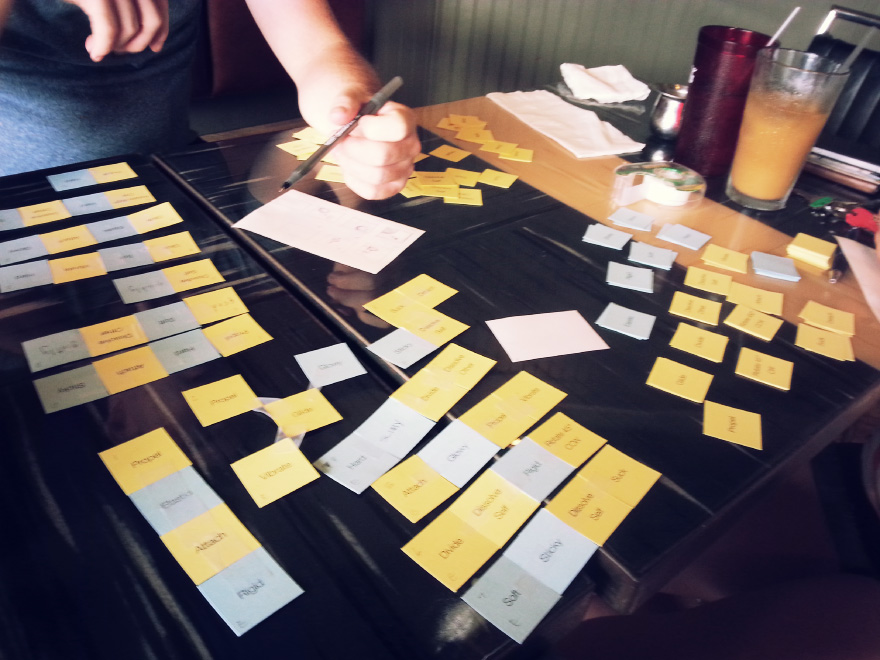
GAME MECHANICS
The process took many iterations, and when I brought the model to be prototyped with Unity game engine, the paper models were too complicated. Eventually, the mechanisms of the game were reduced to a few simple features.
The player first entered the game as a single-cell critter. As the player consumed the food available in the environment, the single-cell critter would spawn another cell. The child of single-cell critter would either be cell type A or cell type B. Each of those cell types has its own innate properties.
According to the model Axelrod used for abstracting the content of a particular component, the innate properties of the cell types could consider using the same kinds of abstraction. Namely the cell types would consist of basic features that both types shared and that were uniquely their own. Each feature has a set of traits and values (Axelrod, 1997). The original single-cell critter was given these features:
1. Mobility was a feature in which the original cell critter allow players to control the position change of the cell from point A to point B. The traits included the speed and time it took the cell to traverse. The value of each trait dictated the effects of the features. For example, the speed’s value, ranging from 1 – 10, influenced the amount of time it took for the cell to move in the distance of 1 unit.
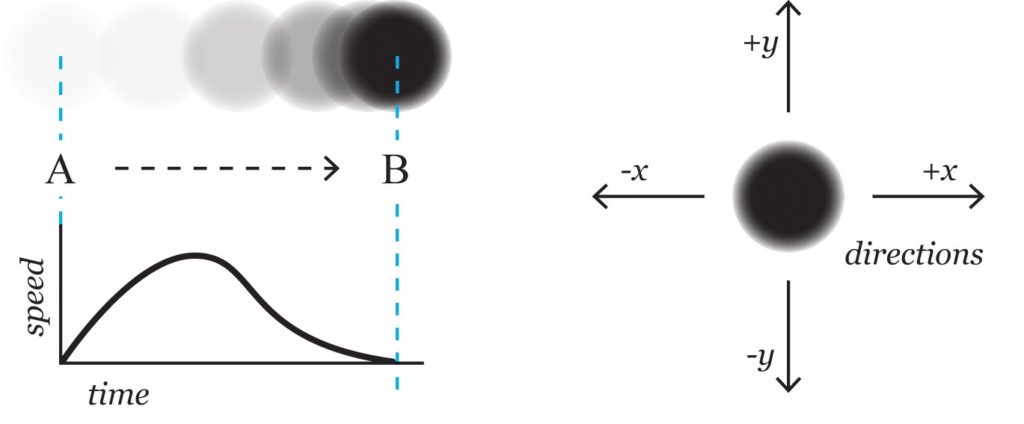
2. All cells had a feature which prevented cells from overlapping one another. A boundary functioned as a wall for each cell.

3. Players had the ability to connect from the original single-cell critter to child cell Type A and amongst the cell Type A children. The main purpose of this feature was to afford players the ability to configure a colony and form their strategy to respond to the environmental change.
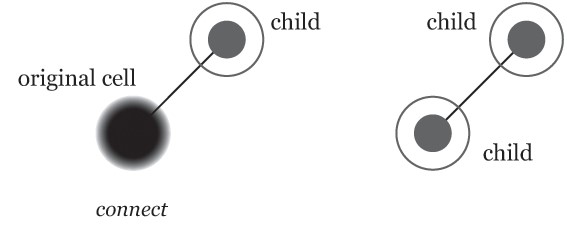
4. When the original cell was in close proximity to food, it would eat the food and gain food points (FP). The value of the FP gained was dependent on the amount of children the colony had. The more there are children, the less the value of the FP eaten as the colony had more burden to sustain all the cells.
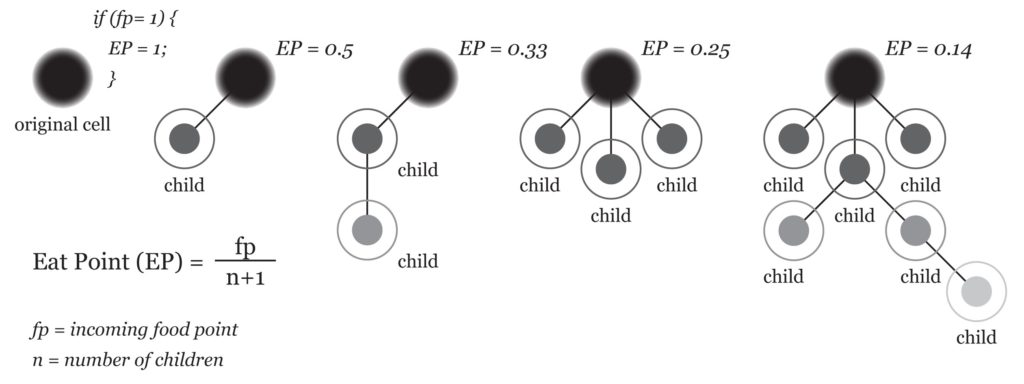
5. Spawning was a capability of the original cell to give birth to a new cell. Once the cell had eaten a sufficient amount of food, it would have enough energy to spawn a child. The reason why the cell spawns instead of growing in size is to allow players to form their own complex configurations. The child would either be cell type A or cell type B. The player would be able to choose what kind of cell to be spawned.

There were two types of child cells: cell type A and cell type B. While they shared a few of the features from the original cell, namely, passive mobility, boundary, and connect, each of these cell types had its own specialized attributes. Cell type A was a cell that helped “catch” food and cell type B was a cell that helped “attack” enemies. However, even if cell type B was inherently aggressive towards enemies, it still lost points when attacking. Thus, the player needed to have multiple type Bs to effectively kill the enemy. And since type A was non-aggressive, it only lost its points without harming the enemies when in contact.

6. All cells were able to die. If either cell type A or B died because of enemy attacks, then the cell would just vanish. However, without enemy attacks, the players could choose to “sacrifice” either cell types and turn them into food. Cell type A turns into more food than B, because type A was inherently related to capturing food, whereas type B was inherently related to attacking enemies.

Even with the simple mechanisms, the features of the cells needed the value to be adjusted throughout the process in order to gain a better balance gameplay for the game.
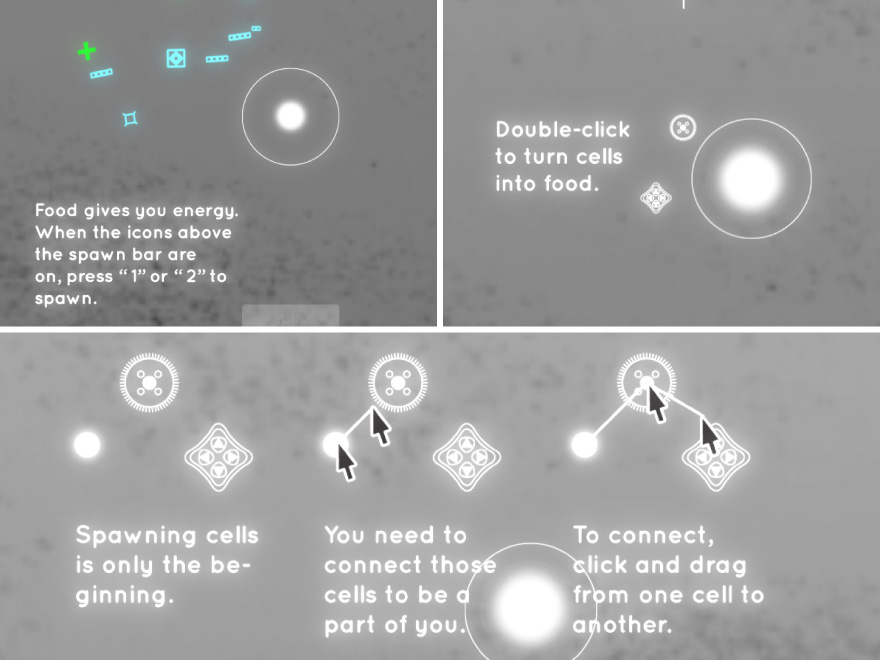
Depending on the configurations of those cell types, new high-level behaviors may emerge: cumulative, aggressive, explorative, passive, etc. This is the essence of an emergent system: the interactions of low-level components (cell types) produce high-level behaviors. The prototype stopped at a single player game. It would be an interesting study to see the consequences of a multi-player game.
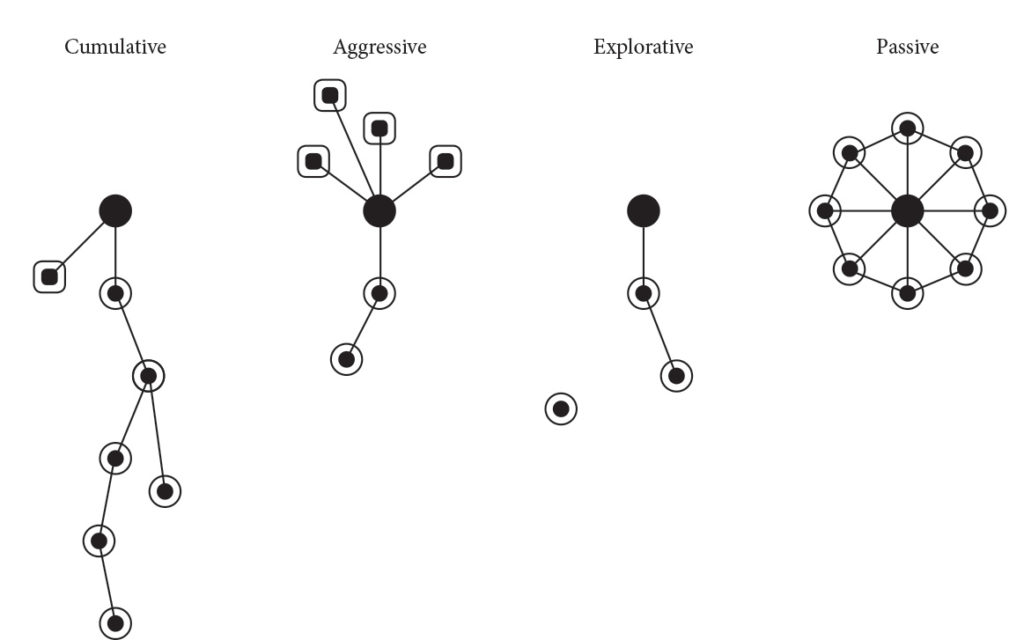
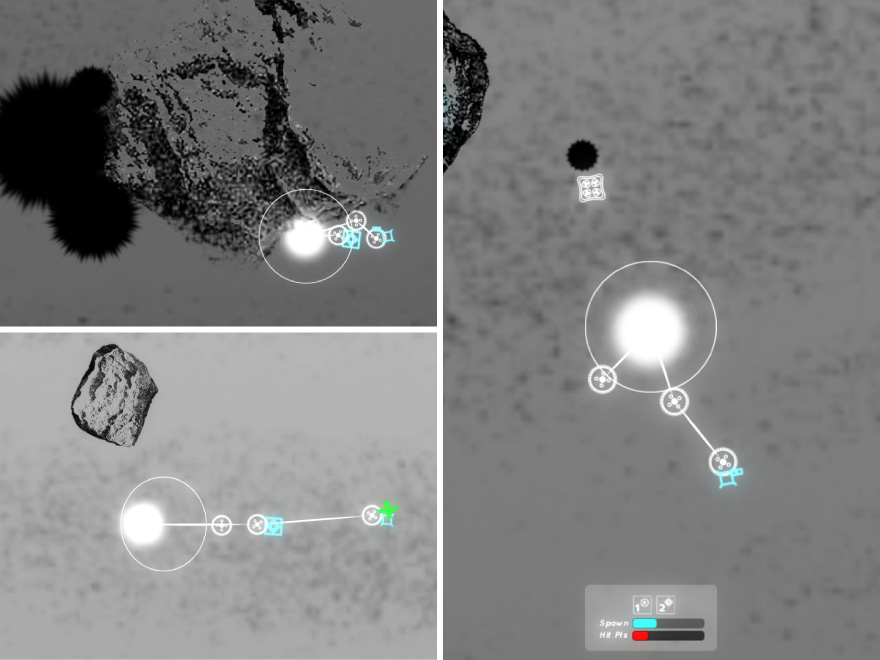
REFLECTIONS
1. The Cell game in this exploration was prototyped to be a one player game. As analyzed above, out of the LL interactions/configurations of the components (basic cell types), different HL behaviors were identified. There were potentials for a multi-player game that were not explored further. Aspects of environmental change, strategy switching, and signaling, would reach higher-level dynamics in a multiplayer game.
2. This exploration looked at game and play not in terms of activity as leisure as the main theme. Rather, as a system of whatever kind, in which rules can be derived, understood, and applied for the real world. The difference between Agent-Based Model (ABM) and participatory design is that ABM, which utilizes computer simulations is more prediction-oriented, whereas participatory design includes people and is more generative. The Cell game combined aspects from ABM and participatory design. This exploratory case worked as a prototype for a potential research tool.

